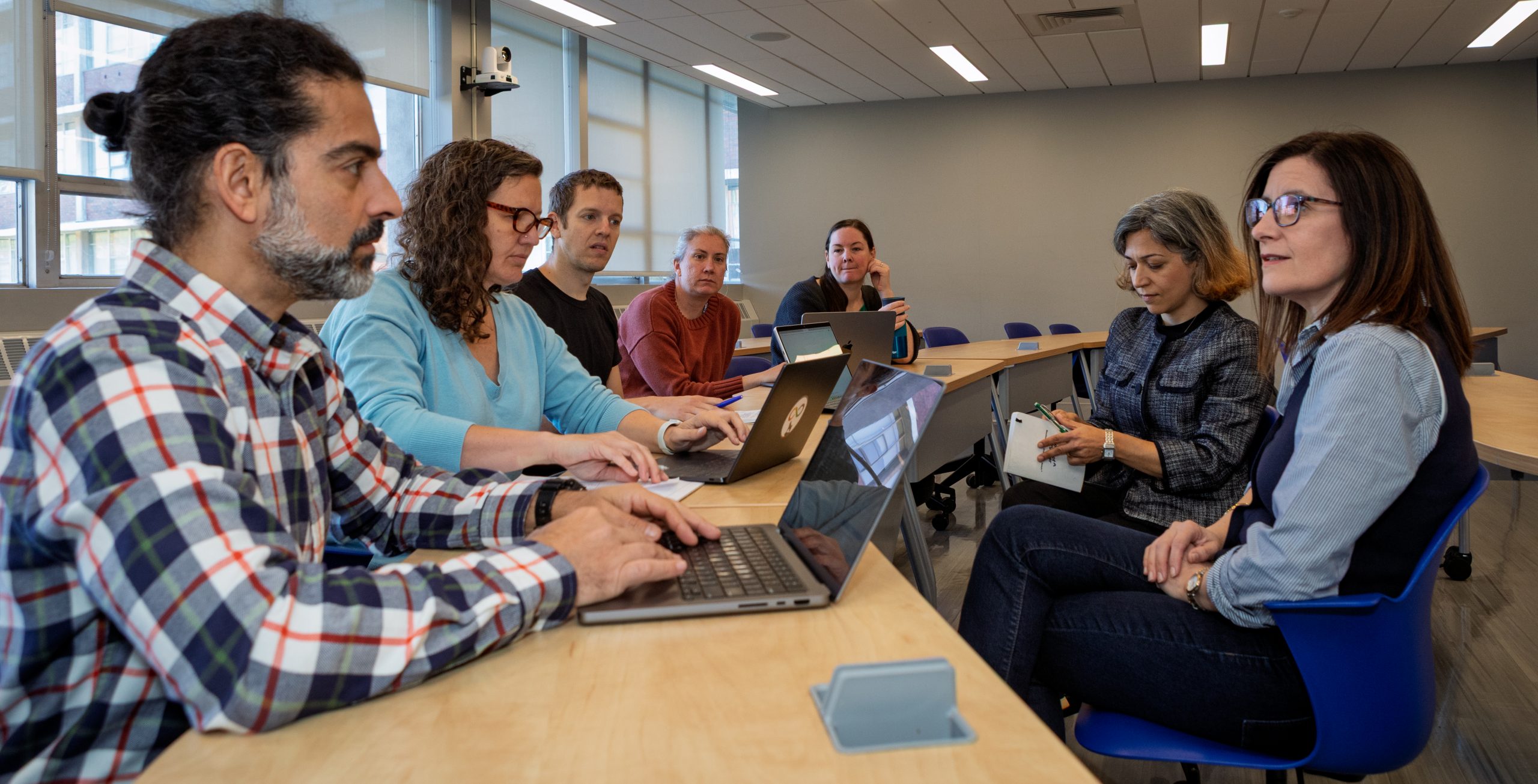Anne Oeldorf-Hirsch, assistant professor of communication in the College of Liberal Arts and Sciences, recently published the study “Face threats, identity, and the audience on Facebook” in the journal Computers in Human Behavior, with colleagues Jeremy Birnholtz of Northwestern University and Jeffrey Hancock of Stanford University. The study showed that something as simple as a Facebook post by a friend can produce strong emotional and nonverbal responses. She spoke with UConn Today about the study.
What are face threats?
In self-presentation, all of us are putting on some kind of face – the way we want to present ourselves. We don’t want to tell people everything, or we want to present a certain image. A face threat is really a threat to that kind of presentation. You may disclose something about yourself that you didn’t want as part of your public image. Facebook is a place where that is so easy to do.
As Facebook has grown, we’ve seen it become an increasingly controversial platform because of the lack of control that people have over what can be posted there. What part did that play in the decision to do this study?
For me what was interesting about this platform is that it is a place where others can disclose information about you and it starts building a different identity than the one you were trying to create. There is the potential lack of control where I can type whatever status I want about what I’m doing now, but someone else can come in and say, no, I didn’t see you working out like you said you were doing. There is the sense that we don’t have full control over how people can see us on the site because others can post about us as well.
Previous studies on this topic were primarily retrospective examinations, but this is one of the first studies done in real time. Why is it necessary to look at it in real time?
Going back, somebody can talk about their reaction to a post, but we really don’t know how they truly reacted in that moment. One of the things we were interested in was not just the emotional reaction, but whether there was a psycho-physiological reaction and to gauge the different variables that go with it, such as how much it captured your identity or who the audience was and how it made a difference. Then we can test the actual effects of it as well, compared with someone recalling it.
You detail the process of embarrassment established in 1981 by psychologist Robert J. Edelmann in his studies. Why is that important to examine?
Edelmann’s older work on embarrassment assumes a face-to face situation. We were interested in how Facebook can parallel that, and whether the process is going to work the same way and have the same effect. We think of Facebook as a space where you can do the same kind of thing with communication, but we can argue that it’s not real life; it’s not the offline world; it’s not face-to-face. We’re testing if the established process holds true in this virtual space. What’s interesting about Facebook or other online platforms is that maybe the emotions or feelings go away, but often the content is still there. Face-to-face you may say something to somebody else that is embarrassing, but after that, the only thing that is left is the memory of it. On Facebook, you can go back and find that same post, or you could take a screen shot of it and further share it.
The study examined three areas of concern – content, disruption of the person’s identity, and the audience – and found that the audience is of primary importance. Why is that significant?
Previous research had already found that audience size did not make that much of a difference. That was surprising. We thought the more people who would see a post would matter. We tested a lot of different categories, such as: What if your boss sees it? Your family? None of these made as much of a difference as: I don’t know who may be seeing it. We pinned together the idea of capturing identity and unknown audience as the thing that is most embarrassing is when something posted is not necessarily representative of you. If someone you don’t know sees it, they can get the wrong idea about you because they don’t have as much information as someone who does know you.
You used video to record people responding to their postings, even though your subjects knew each other well. What surprised you in watching the reactions?
We were surprised at how much of a reaction there was, because the subjects were just looking at a screen, seeing a post. It’s not face-to-face, there’s no one around, they don’t know who – if anyone – has seen it, but they still had these very visible reactions. We’d see them start to laugh in this nervous way or fidget around in their chairs more. We were surprised how much of a reaction there was, given the fact that this is not happening face-to-face.
The study participants were pairs of college students who are friends. Is there something different that would widen the diversity of subjects in future studies?
One main thing we thought about for the future is different types of relationships. This group was all pairs of friends who considered themselves good friends. But how is it different when it’s a parent and child, or two co-workers? We would want to broaden out in age as well. We found in this case we couldn’t really assess the relationship aspects of it. We imagine that the type of embarrassment they would feel, the type of things they would share, depended so much upon the relationship they have with each other, and we limited it to one person. There’s some work on parent-child relationships on social media and the boundaries that get put into place; I can imagine that could be another space where these kind of things can come up. If one friend is poking another, does the rest of the network think, they’re friends, they’re just joking around, versus a mother posting something about her child ? How does that look to the audience?
Has there been a look yet at how other social media platforms work in terms of embarrassment or other reactions?
There is certainly a lot of focus on the different type of networks that exist on these platforms, and people the users let into these platforms and how they use them. Snapchat is a more intimate medium, where you’re just communicating between two friends or a select group of friends. It’s not broadcast the same as Facebook. I would imagine the embarrassment on Snapchat could be a bit different, because it’s much harder to post something about someone else. It’s really just sharing really quick what I’m doing; it’s not so much a place where you can tag somebody. It’s also different in that the information disappears after a while. It doesn’t linger as it does on Facebook, where you can find a posting from five years ago and keep commenting on it.
The whole purpose of Facebook is to keep adding and bringing people to the dialogue. Is this the optimum platform to measure for this kind of inquiry?
Facebook makes sense for this because you have such an identity and a profile that you’ve crafted over all this time. There is a set of friends and a very visible network. I think Snapchat is popular now partly in response to Facebook, where there is not a profile you can go to and just see what I posted today. It’s a lot more controlled. You can post something and it goes away.
We’ve seen unfortunate incidents where postings on Facebook have resulted in people not just embarrassed, but being harmed. Can this type of study make people more aware of reactions when things are posted?
I think it’s helping build an understanding that if we think of something like cyber-bullying, it’s easy to look at social media as not real. The effects show we have a strong emotional reaction, with the kind of physical changes we see on the video. There are stronger emotional effects, and we do experience it potentially as much as face-to-face.



